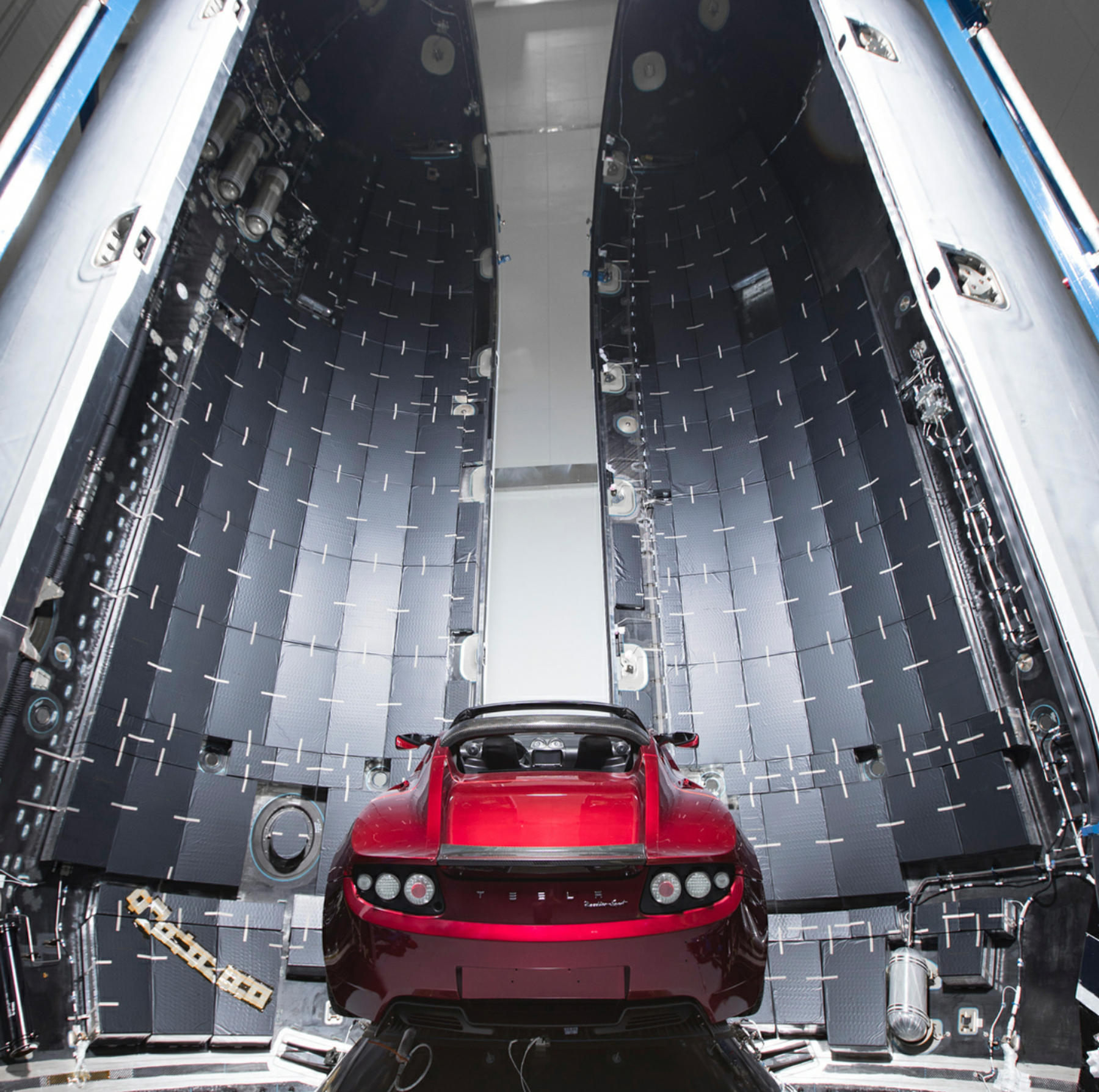
Just a few days ago SpaceX released the first photos of their highly-anticipated new heavy-lift rocket, the Falcon Heavy, being prepared for its inaugural launch in the company’s Horizontal Integration Facility (HIF) at Kennedy Space Center launch complex 39A. But today, Elon Musk released the first images of the rocket’s payload, an original Tesla Roadster, being prepared to launch atop the mammoth triple-barreled booster.
SpaceX will send the vehicle on a billion year elliptic Mars orbit, playing “Space Oddity” according to Musk, as a major publicity stunt. Musk owns both SpaceX and Tesla, and the rocket’s debut launch is a demonstration, so why do it? Because they can.
“Test flights of new rockets usually contain mass simulators in the form of concrete or steel blocks. That seemed extremely boring,” said Musk on his Instagram this afternoon. “Of course, anything boring is terrible, especially companies, so we decided to send something unusual, something that made us feel.”
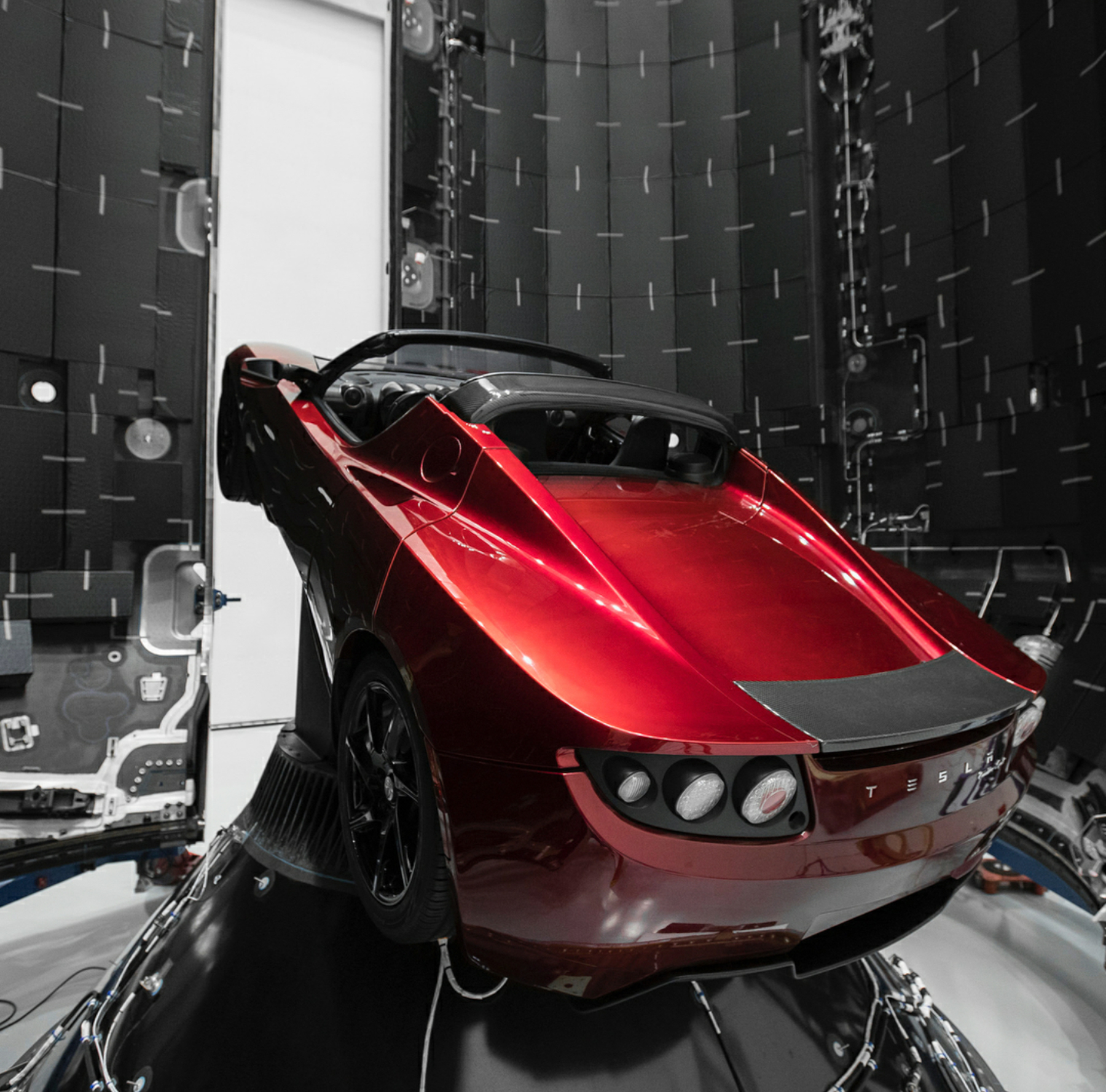
As we reported previously this week, liftoff of the 230 foot tall (70 m) rocket from launch complex 39A at NASA’s Kennedy Space Center in Florida is expected to occur in January or February, but the company has not announced any dates publicly for static test fire or launch attempts yet.
The company originally wanted Falcon Heavy flying missions beginning in “late 2013 or 2014”, but numerous delays, two exploded rockets (CRS-7 and AMOS-6), and greater than expected engineering challenges in developing Falcon Heavy all contributed to a now, much later expected debut of early 2018 for the new booster.
Given the delays and challenges, Musk has set the bar a bit low for the rocket’s first demo flight. “I hope it makes it far enough away from the pad that it does not cause pad damage,” said Musk this summer. “I would consider even that a win, to be honest.”
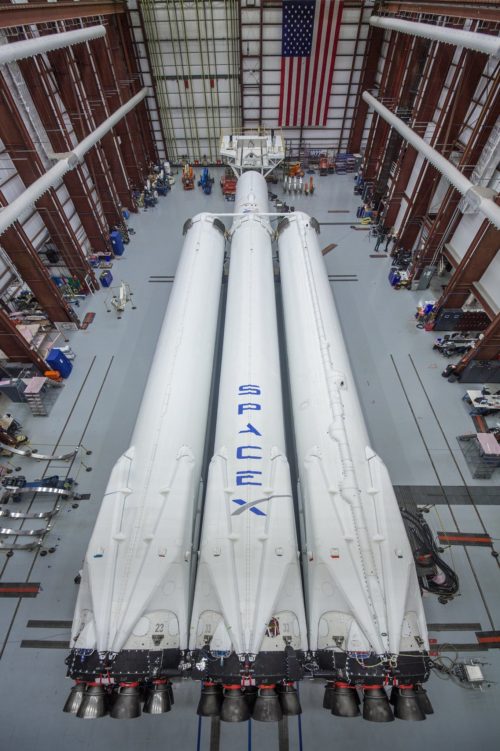
Both side boosters are already flight-proven, having previously landed after launching the Thaicom-8 and NASA CRS-9 missions, but the vehicle’s central core is new, built specifically to withstand the unique stresses and environment of launching with three cores and 27 engines.
“With the ability to lift into orbit over 54 metric tons (119,000 lb)–a mass equivalent to a 737 jetliner loaded with passengers, crew, luggage and fuel–Falcon Heavy can lift more than twice the payload of the next closest operational vehicle, the Delta IV Heavy, at one-third the cost,” says the company on its website, comparing their heavy-lifter to ULA’s, their main rival.
At liftoff, all 27 engines will produce as much thrust as eighteen jumbo 747 aircraft at full power, or 5.13 million pounds of thrust. That will make it the most powerful U.S. rocket since the Saturn V, which launched astronauts to the moon during NASA’s historic Apollo era, and the most powerful rocket currently operating in the world.
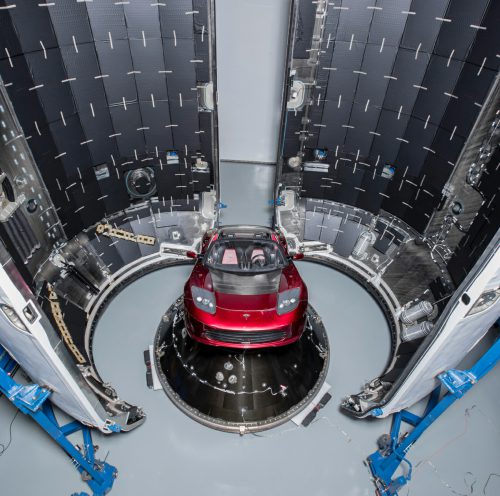
All three cores will return to Earth for vertical landings after launch. Two will return to Landing Zone-1 on neighboring Cape Canaveral Air Force Station, while the central core will land on an offshore SpaceX autonomous drone ship.
All three cores underwent individual test firing at the company’s proving grounds in McGregor, TX long ago, but a lot of testing will now be needed on the fully integrated rocket ahead of static test fire and launch from 39A. Nobody has ever fired up 27 engines on a launch pad before.
BELOW: More photos of Elon’s Tesla being prepared for launch
Soon, SpaceX will roll Falcon Heavy out from the HIF to the pad, raising it vertical for fit checks and validating the system, which will eventually lead to a “wet dress rehearsal” and static test fire of the rocket. It will then be rolled back to the HIF for its Tesla payload.
Depending on the data obtained, more test fires may be conducted, further work may be required of the engines, rocket or pad support infrastructure, or SpaceX may decide the data is good enough to support a GO for proceeding with a launch attempt.
.
FOLLOW AmericaSpace on Facebook!
.
Missions » FH Test »



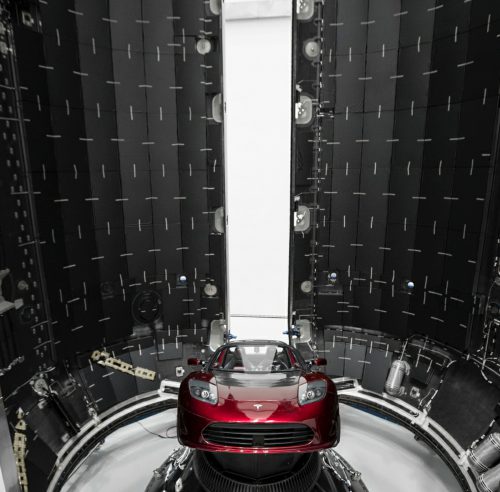
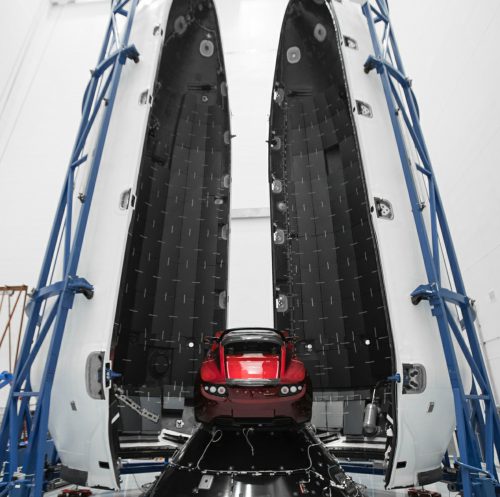
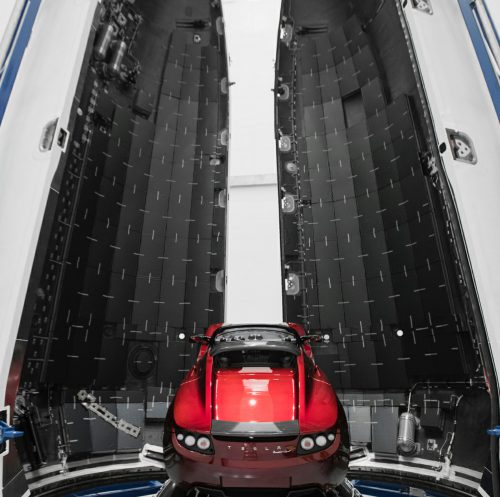

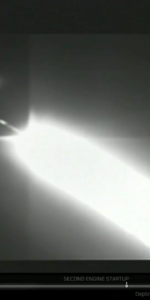
I think you mean the most powerful rocket since Energia which reportedly produced 7.9M lbf at launch.
” That will make it the most powerful U.S. rocket since the Saturn V ”
U.S. Rocket. What they wrote is not what you want to have replied to.
Picture of the Roadster on the custom launch mount before the fairings rolled in.
Or -not. No <img html tags for you on this site.